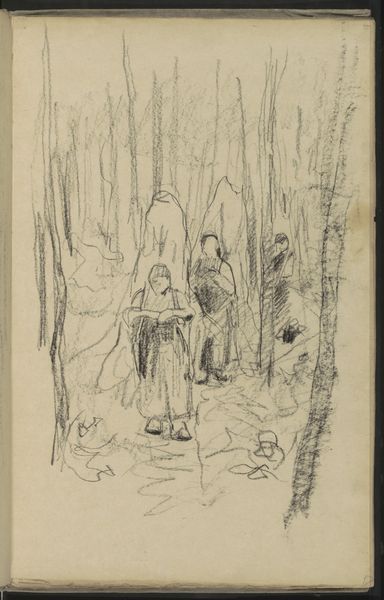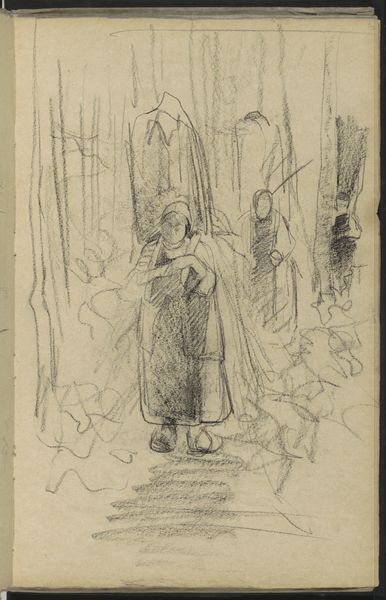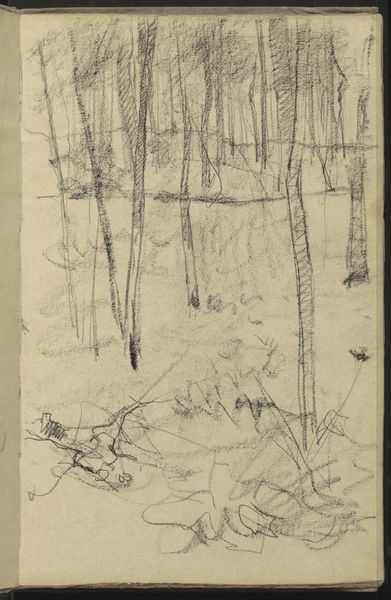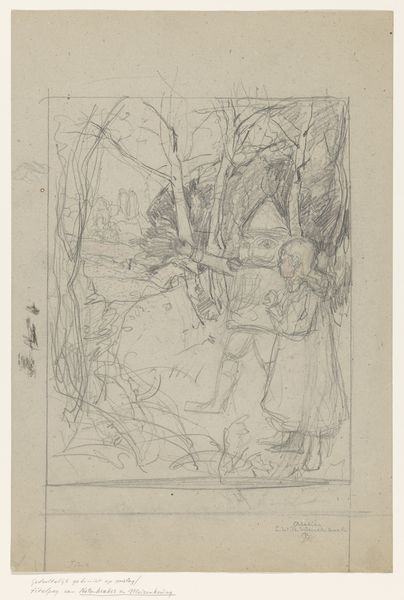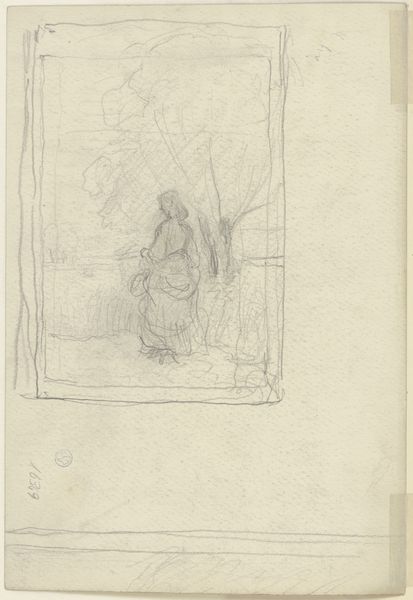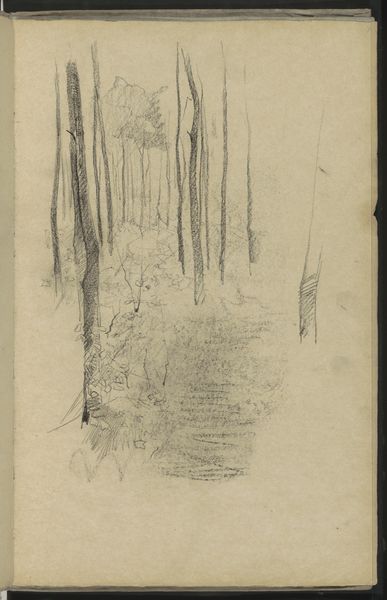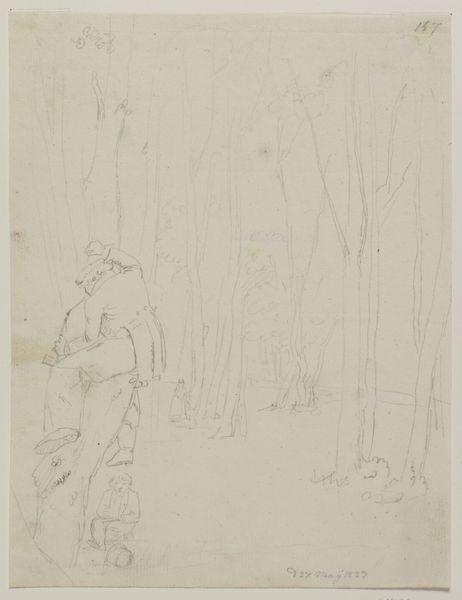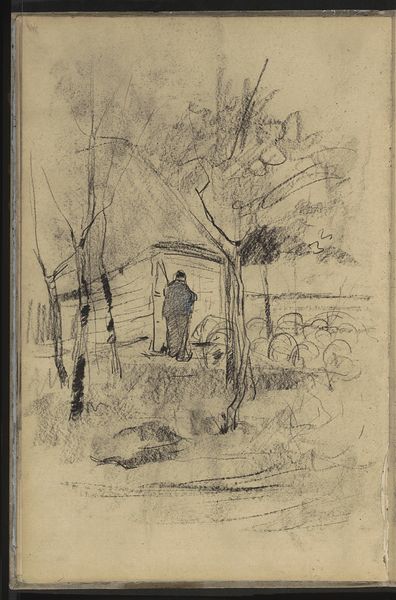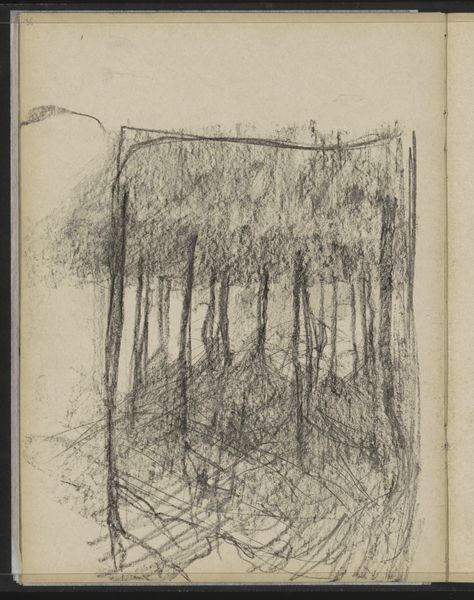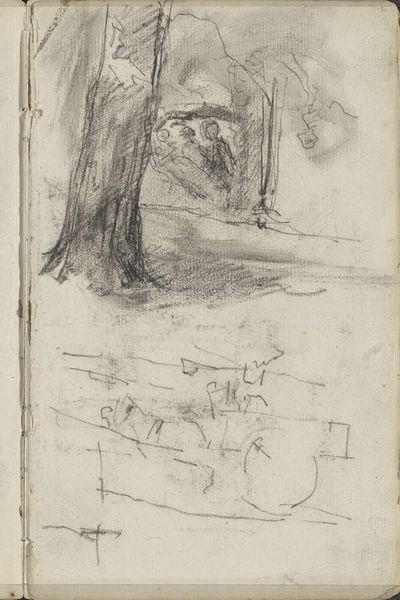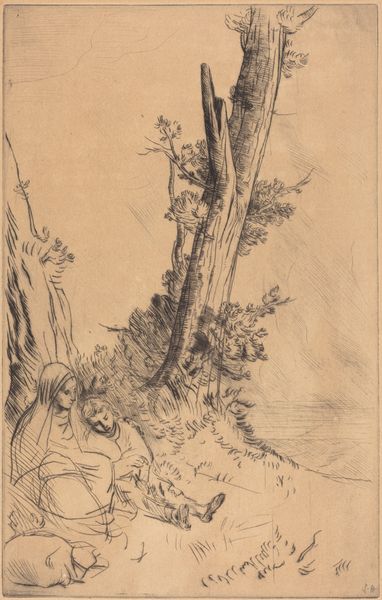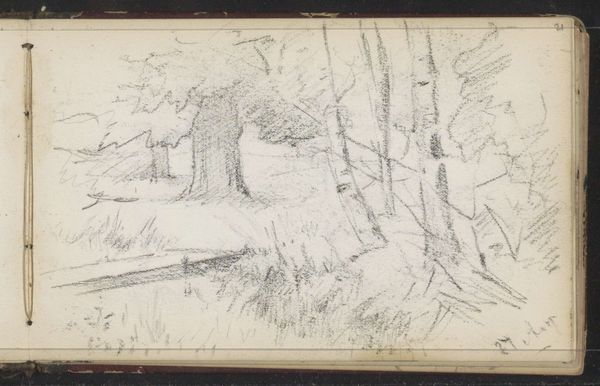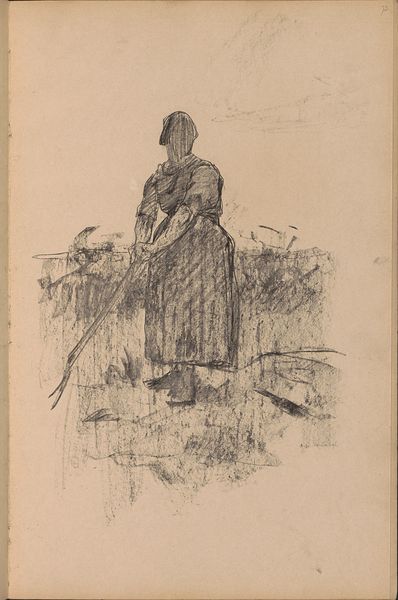
drawing, pencil
#
drawing
#
dutch-golden-age
#
impressionism
#
landscape
#
figuration
#
pencil
Copyright: Rijks Museum: Open Domain
Curator: I’m immediately struck by the solemnity of this forest scene; there’s a stillness that feels almost melancholic. Editor: It's a compelling work isn't it? We're looking at "Three Women with Bundles of Branches on a Forest Path," a pencil drawing created by Willem Witsen around 1884 to 1887. It's currently held in the Rijksmuseum. Curator: The figures are so central, but nearly swallowed by the trees. There's a clear tension between human presence and the overwhelming power of the natural world. It's echoed through its monochromatic expression, evoking the traditional visual tropes around nature versus the human form. Editor: Witsen's choice of pencil adds to that feeling; there's an immediacy and roughness to the lines that emphasize the raw and unrefined state of nature, especially compared to polished depictions of idealized country life common at that time. This gives off the expressionist artistic choices for stark unidealism of workers versus landscape. Curator: Exactly. He isn’t presenting an idyllic escape but capturing a slice of life – these women are working, carrying visible burdens in a somber wood. There is something both noble and heartbreaking here. It echoes social realism that focuses on women's work. Editor: What I find especially interesting is that Witsen’s work reflects the political climate of his time. Late 19th-century Holland was seeing significant social upheaval and a questioning of traditional rural values. This image resonates with that. Curator: It speaks to a kind of quiet resistance, or perhaps simply a document of overlooked lives. The symbolism feels deeply personal; the branches themselves suggesting burdens or things carried, not necessarily physical things. Editor: Witsen here challenges us to look beyond the picturesque and engage with the realities of these lives, and perhaps the quiet heroism inherent in daily existence in the face of that socioeconomic change. Curator: It is indeed a reminder that art, even in its simplest form, has the power to hold cultural memory and give dignity to those whose stories might otherwise go unnoticed. Editor: A compelling and subtle commentary, and perhaps all the more powerful for its restraint. Thank you for that insightful read.
Comments
No comments
Be the first to comment and join the conversation on the ultimate creative platform.
